- Bonding
-
An alternative to veneers is a process called bonding, in which a tooth-colored material that looks like the enamel of your teeth is molded and shaped, and then hardened and polished. Bonding can be used to improve the color of a tooth, or close unsightly gaps.
Bonding is generally not as permanent a process as veneers, and can be vulnerable to the same kind of staining your natural teeth are prone to. Bonding can also be more prone to chips and cracks than veneers.
Caps are generally preferred to bonding when such a procedure isn't deemed to be effective in the long run.
- Crowns and Bridges
-
Bridges
Bridges are natural-looking dental appliances that can replace a section of missing teeth. Because they are custom-made, bridges are barely noticeable and can restore the natural contour of teeth as well as the proper bite relationship between upper and lower teeth.
Bridges are sometimes referred to as fixed partial dentures, because they are semi-permanent and are bonded to existing teeth or implants. Some bridges are removable and can be cleaned by the wearer; others need to be removed by a dentist.
Porcelain, gold alloys or combinations of materials are usually used to make bridge appliances.
Appliances called implant bridges are attached to an area below the gum tissue, or the bone.
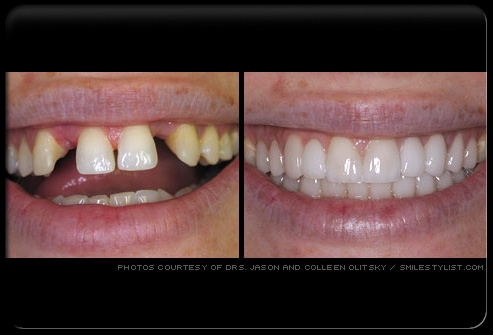
Crowns
Crowns are synthetic caps, usually made of a material like porcelain, placed on the top of a tooth.
Crowns are typically used to restore a tooth's function and appearance following a restorative procedure such as a root canal. When decay in a tooth has become so advanced that large portions of the tooth must be removed, crowns are often used to restore the tooth.
Crowns are also used to attach bridges, cover implants, prevent a cracked tooth from becoming worse, or an existing filling is in jeopardy of becoming loose or dislocated. Crowns also serve an aesthetic use, and are applied when a discolored or stained tooth needs to be restored to its natural appearance.
Procedures
A tooth must usually be reduced in size to accommodate a crown. An impression is made of the existing tooth and an impression is made. The impression is sent to a special lab, which manufactures a custom-designed crown. In some cases, a temporary crown is applied until the permanent crown is ready. Permanent crowns are cemented in place.
Crowns are sometimes confused with veneers, but they are quite different. Veneers are typically applied only to relatively small areas.
Caring For Your Crowns
With proper care, a good quality crown could last up to eight years or longer. It is very important to floss in the area of the crown to avoid excess plaque or collection of debris around the restoration.
Certain behaviors such as jaw clenching or bruxism (teeth grinding) significantly shorten the life of a crown. Moreover, eating brittle foods, ice or hard candy can compromise the adhesion of the crown, or even damage the crown.
- Cosmetic Fillings
-
There are alternative, natural-looking materials to conventional silver-colored fillings - materials made from porcelain and composite resins, which are colored to match natural tooth enamel. Unfortunately, few materials can match the strength and durability of dental amalgam and such, may need more frequent replacement. Common amalgam alternatives include:
- Composite fillings -- As stated, composite fillings are just what the name implies: a mixture of resins and fine particles designed to mimic the color of natural teeth. While not as strong as dental amalgam, composite fillings provide a pleasing aesthetic alternative. Sometimes, composite resins need to be cemented, or bonded to a tooth to allow for better adhesion.
- Ionomers -- Like composite resins, these materials are tooth-colored. Ionomers are made from a combination of various materials, including ground glass and acrylic resins. Ionomers are typically used for fillings near the gum line or tooth root, where biting pressure is not a factor. They are more fragile than dental amalgam, however. A small amount of fluoride is released by these compounds in order to facilitate strengthened enamel in the affected area.
- Porcelain (ceramic) -- This material is usually a combination of porcelain, glass powder and ceramic. Candidates for porcelain fillings are typically crowns, veneers and onlays and inlays. Unlike ionomers, porcelain fillings are more durable but can become fractured if exposed to prolonged biting pressures.
- Implants
-
Before development of dental implants, dentures were the only alternative to replacing a missing tooth or teeth. Implants are synthetic structures that are placed in the area of the tooth normally occupied by the root. Implants are anchored to the jawbone or metal framework on the bone and act as a foundation for an artificial tooth or permanent bridge. In some cases, implants can be used to attach dentures.
Not everyone is a candidate for a dental implant. For a successful implant to take hold, a candidate must have proper bone density and have a strong immune system.
In general, good candidates who have dental implants can expect high success rates with the procedure.
The procedure can take several visits. During the first visit, an anchor is placed into the jawbone and the site is allowed to heal for several weeks or months. This gives your tissue time to grow around the anchor to more firmly hold it in place.
During a follow-up visit, an artificial, natural-looking tooth is fitted over the implanted anchor.
Types of implants
Various types of implants include full upper and lower, anterior, posterior, and single-tooth:
Full upper replacements
The upper set of teeth is replaced with implants. Procedure steps include:
- Missing tooth roots are replaced with implants, which are covered under the gum line.
- A healing period of up to six months allows implants to take.
- The implants are uncovered and extensions attached.
- Replacement teeth are affixed to the implants and extensions.
In some cases, full upper replacements can be removed.
Anterior replacement
Implants are used to replace the front teeth (also called incisors and cuspids). Procedure steps include:
- Missing tooth roots are replaced with implants, which are covered under the gum line.
- A healing period of up to six months allows implants to take.
- The implants are uncovered and extensions attached.
- Replacement teeth are affixed to the implants and extensions.
Full lower replacement
The lower set of teeth is replaced with implants. Full lower replacement usually only uses four to six implants (near the front), which are used to anchor a denture. This obviates the need for denture adhesive.
Posterior replacement
Implants are used to replace the bicuspids and molars (the back teeth). Procedure steps include:
- Missing tooth roots are replaced with implants, which are covered under the gum line.
- A healing period of up to six months allows implants to take.
- The implants are uncovered and extensions attached.
- Replacement teeth are affixed to the implants and extensions.
Single tooth replacement
Procedure steps include:
- Missing tooth root is replaced with an implant, which remains covered under the gum line.
- A healing period of up to six months allows the implant to take.
- The implant is uncovered and an extension attached.
- Replacement tooth is affixed to the implant and extension.
- Invisalign®
-
Invisalign's® invisible, removable, and comfortable aligners will give you the beautiful straight teeth you've always wanted. And best of all, no one can tell you're wearing them. Invisalign is great for adults and teenagers.
What is Invisalign®?
- Invisalign® is the invisible way to straighten your teeth without braces.
- Invisalign® uses a series of clear, removable aligners to straighten your teeth without metal wires or brackets
- Invisalign® has been proven effective in clinical research and in orthodontic practices nationwide.
How Does Invisalign® Work?
- You wear each set of aligners for about 2 weeks, removing them only to eat, drink, brush, and floss.
- As you replace each aligner with the next in the series, your teeth will move little by little, week by week - until they have straightened to the their final position
- You'll visit us about once every 6 weeks to ensure that your treatment is progressing as planned.
- Total treatment time averages 9 - 15 months and the average number of aligners during treatment is between 18 - 30, but both will vary from case to case.
How Are Aligners Made? You'd Be Amazed...
- The aligners are made through a combination of our expertise and 3-D computer imaging technology.
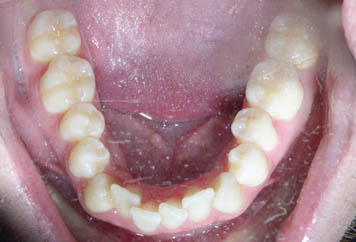
before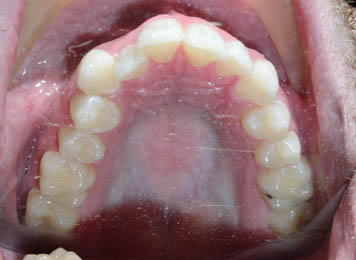
before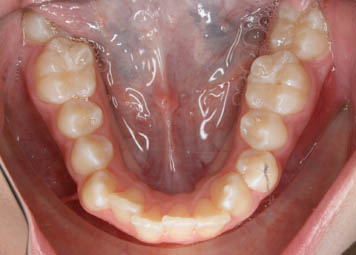
before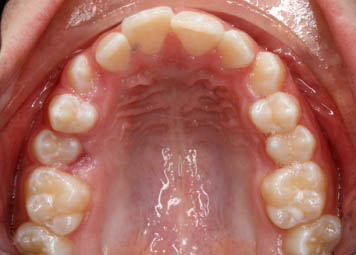
before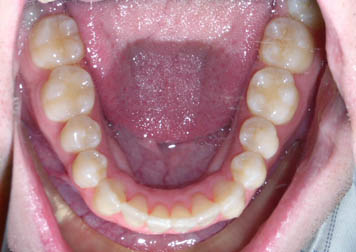
after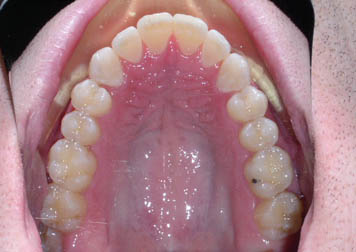
after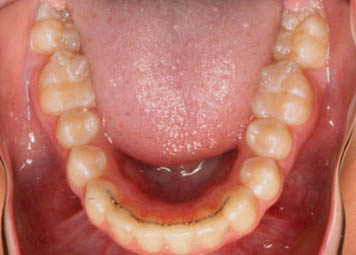
after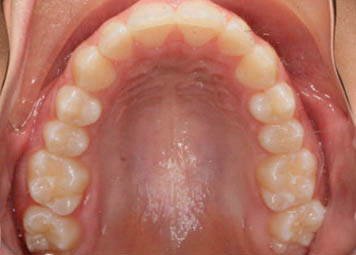
after
In just two or three dental visits, a veneer can reverse years of stains caused by foods, caffeine and tobacco use.
Special thin laminates, called veneers, can often be used to correct discolored, worn down, cracked and chipped teeth. Veneers can also be used to close unsightly gaps between teeth.
An impression of the tooth must be made and a veneer molded by a lab technician. Because veneers require a small amount of enamel to be removed, they are permanent and non-reversible.
The process involves buffing the tooth, removing an extremely thin layer of the tooth to allow for the thickness of the veneer, an impression of the tooth, and final bonding of the veneer to the tooth with special cement. A special light is used to complete the process.